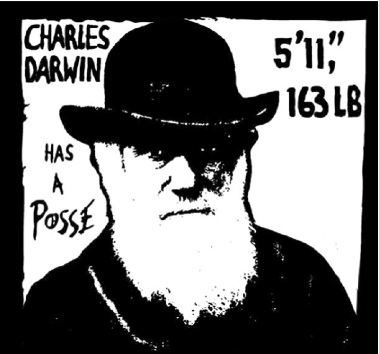 If you would like to contribute to our year-long "celebration" of Darwin's 200th birthday, please send your articles, editorials, or any other creative and informative pieces to nvclub108@gmail.com
If you would like to contribute to our year-long "celebration" of Darwin's 200th birthday, please send your articles, editorials, or any other creative and informative pieces to nvclub108@gmail.comHG Narasingha Gurudas (a.k.a Martin Lyons) was gracious enough to share with us a few excerpts from his upcoming book, in which he plans to establish the Krsna Conscious positions of evolution and creation in opposition to some of the fallacious dogmas of modern religion and science.
Here is the first excerpt he shares with us, a story of a real "fluke"
Twelfth Argument: It’s Just A Lucky Fluke
From the enormity of examples the natural world offers to utterly confound any proposal of evolution, I must admit I do have a pet favorite – although I certainly wouldn’t want one as a pet. The creature I have in mind is a parasite known as the Lancet liver fluke (Dicrocoelium dendriticum).
Like many parasites, liver flukes require several entirely different host-species to carry them through the various stages of their life-cycles. As adults, they live in the livers of cows, where they mate, and their eggs are then excreted via the host’s fecal matter. Terrestrial snails that eat such matter become infected by the fluke’s larvae, which settle in the snails’ digestive tracts. The snails protect themselves by forming cysts around the little parasites, which are then excreted in turn. Ants looking to snail slime as a source of moisture simultaneously ingest these cysts, which are each filled with hundreds of juvenile flukes. These juveniles are free to wander throughout the ant’s body, but one in particular moves to the sub-esophageal ganglion, and this is where the most extraordinary element of this whole story takes place.
We can already recognize that the development and survival of such parasites requires an incredible degree of synchronicity and precise co-ordination. It is inconceivable that the myriad specific adaptations required for the parasites to not only thrive in the various host species, but to take advantage of unique processes within the hosts themselves (e.g. the snails’ cyst-manufacturing processes), could all have simply ‘evolved,’ unplanned, unguided, and all ‘by chance’ – along with the actual processes by which they are transferred from one host to the next.
Yet putting all such observations to the side for the moment, let us continue our story from the point where one fluke has journeyed to the aforementioned cluster of nerve-cells lying just underneath the ant’s esophagus. Somehow or other this fluke is able to manipulate the nerves there so as to cause the ant to act in a most peculiar manner. What happens is that as evening draws near, such an infested ant leaves the nest and climbs to the top of a blade of grass, where it locks itself into place with its mandibles and patiently awaits being eaten by a grazing cow. Should no cow happen to graze on its particular grass-blade, the ant climbs back down at dawn to rejoin the rest of the colony, and so escapes the heat of the day which would kill both it along with its parasitic controllers. In other words, it has now been programmed to follow a suicide-mission specifically tailored for the benefit of the flukes.
This fascinating scenario raises many questions. How did the first fluke that was swallowed by an ant come to figure out how to pilot such an alien craft, how did it determine its destination (the cow’s liver) as well as the actual means by which it could arrive there (involving activities entirely foreign to the fluke itself, e.g. climbing up grass-blades for the night, locking mandibles in place and awaiting the approaching ‘jaws of death’)? And of course, the favorite old conundrum, suitably reworded for this particular example: which came first (as far as the fluke is concerned, that is): the cow, the snail or the ant? Or isn’t the simple fact that all three are required simultaneously? What series of gradual adaptations could be imagined that could have led up to this spectacularly complex and precise set of arrangements? How can the fluke’s behavior be explained by any undirected random evolutionary process? Rather, it suggests a level of foresight and planning, i.e. intelligence, that in no way can be ascribed to the fluke itself. Perhaps that’s why they call it a fluke.





No comments:
Post a Comment